How to Optimize Billing Rates with ClickTime
Table of Contents
As a finance leader, setting the appropriate billing rates for your company’s services can be difficult.
The problem is that available data on revenue efficiency is often imprecise, incomplete, or out-of-date. Without insight into critical metrics, finance leaders are forced to set billing rates using back-of-the-envelope calculations. This can result in suboptimal pricing models, leading to low margins or lost business.
To price rates with confidence, finance professionals need data they can rely on from a platform that can readily answer their most pressing questions.
ClickTime is a powerful time-tracking and resource management software that provides insights into employee productivity, project costs, and profitability. With ClickTime, business leaders can access the accurate financial data they need to make informed decisions about their billing rates.
In this article, we’ll walk you through the steps you can take with ClickTime to optimize your billing rates. We’ll explain how ClickTime helps you gain visibility into your revenue efficiency metrics, pinpoint your areas of revenue leakage, justify new billing rates, and choose the right billing model for each project.
Step 1
Gain Visibility into Your Revenue Efficiency Metrics
Before you can optimize your billing rates, it’s essential to make sure that you have visibility into accurate data surrounding your revenue efficiency. You’ll need a clear understanding of your utilization rates, labor costs, profit margins, and other key financial indicators. This information makes it easier to determine your actual costs so you can make informed decisions about how to price your services.
ClickTime helps finance leaders analyze project, client, and employee data. With ClickTime, you can easily track labor costs and billings and gain real-time insights into your business operations. Our customizable reports and dashboards make it easy to drill down into your data and get a detailed view of your work in progress. With reliable, on-demand data, you can make more informed decisions about optimizing billing rates.
Below are some metrics ClickTime can help you gather before setting your billing rates.
Step 1 > Revenue Efficiency True Hourly Cost Rates
Employee cost rates refer to the cost of employing someone for one hour, including their salary, benefits, taxes, and other related expenses.
Many employers fail to calculate the true cost of each employee’s hourly labor, which results in inaccurate margin calculations.
The hourly cost of an employee can vary based on the number of hours they work during a pay period. For salaried exempt workers, their hourly cost rate will decrease the more hours they work. This is because their salary is typically fixed for a given pay period, meaning that the more hours they work, the lower their hourly cost rate becomes. On the other hand, non-exempt hourly workers may see an increase in their cost rate the more they work due to the addition of overtime pay.
Calculating each employee’s true hourly cost is crucial in determining their optimal billing rate. Without this understanding, a business may set rates too low, leading to lower margins or even losses.
Let ClickTime Calculate Hourly Cost Rates For You
ClickTime automatically estimates the cost of each hour your employees work. Our system adjusts hourly labor costs based on the time logged during a pay period, taking exempt status and overtime payments into account. This way, the price of every hour allocated to your projects is precisely accounted for.
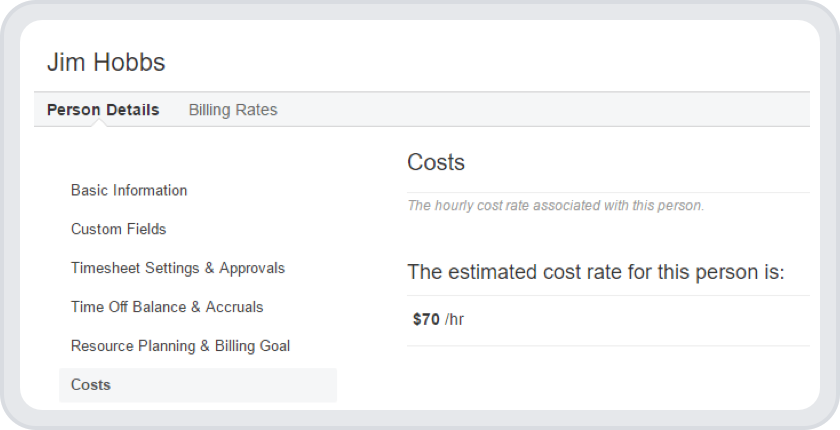
Step 1 > Revenue Efficiency Effective Capacity
Effective capacity refers to the hours an employee or organization has available to work during a given period, accounting for any leave taken, such as vacation or sick days.
Many professional service organizations do not accurately estimate their effective capacity, leading to incorrect billing rates. This is because they may overlook factors such as vacation or sick leave. By not factoring in these absences, organizations overestimate their capacity and underestimate their actual hourly cost rate. This can lead businesses to set billing rates that are too low, resulting in reduced profit margins or even losses.
Determine Effective Capacity in ClickTime
Looking at historical reports allows you to understand your staff’s effective capacity. ClickTime enables you to pull reports detailing all work hours logged during specific time periods. For example, you can create an annual report to see how many working hours your employees logged last year. Or, drill into your workforce’s output during specific seasons to find patterns. Using historical capacity reports, many of our clients now plan for increased illness (and reduced capacity) during the winter months.
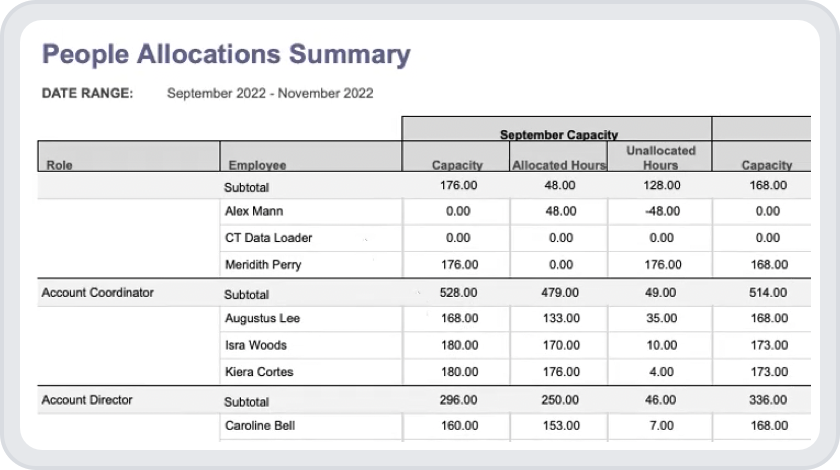
Step 1 > Revenue Efficiency Employee Utilization Rates
Utilization rate is a metric that compares the time employees spend working on billable tasks to their total available working hours.
Many organizations struggle to accurately determine their employees’ utilization rates, leading to inaccurate estimates of billable hours and suboptimal billing rates. This lack of insight into employee utilization can result in underestimating the time required for a project, leading to unprofitable work or missed deadlines.
Check Utilization Rates in ClickTime
ClickTime surfaces utilization rates in many areas throughout our platform. If you’re searching for an individual employee’s utilization, you can drill into their Employee Performance Dashboard. And if you’re seeking org-wide utilization rates, our Resource Management Dashboard or BI Analytics tools are great for finding the information you need.
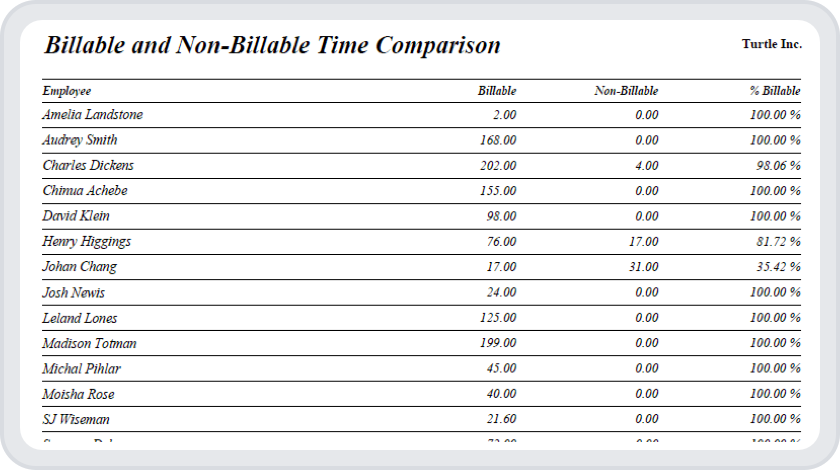
Step 1 > Revenue Efficiency Effective Billing Rates
An effective billing rate refers to the actual revenue a company generates per billable hour an employee works. It considers any discounts, write-offs, or unbillable hours that may have been incurred during a project.
To calculate your company’s historical blended billable rate, you need to divide the total revenue earned during a specific period by the total billable hours worked during that same period. For instance, if a company generates $300,000 in revenue in a month and works 5,000 billable hours during that same month, then the blended billable rate would be $60 per hour. This calculation helps businesses understand the value of their services and set an appropriate rate to cover expenses while still generating profit.
Calculate Your Effective Billing Rates Using ClickTime
To calculate your effective billing rates using ClickTime, you should first create a report detailing all billable hours logged in a given period. The report will also total the billings for you. You can group the billable hours by client, project employee – however you like. Next, divide the total billings collected in your accounting or invoicing platform by the total billable hours logged in ClickTime. This will give you your effective billing rate.
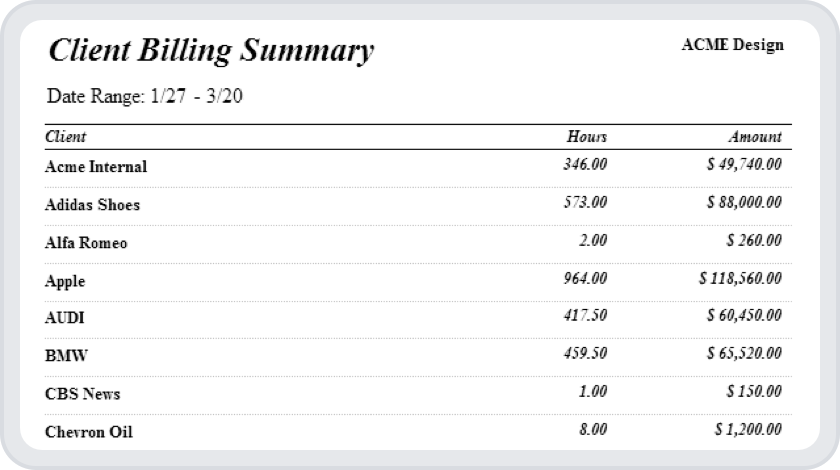
Step 1 > Revenue Efficiency Realization Rates
A firm’s realization rate is the percentage of billable hours that the firm is actually able to bill . It is calculated by dividing the total number of hours billed to clients by the total number of billable hours worked.
This metric is critical in determining a firm’s profitability, as a low realization rate directly impacts the revenue generated by the business. By calculating their realization rate, firms can identify areas where they may be losing revenue and adjust their billing rates accordingly.
Identify Your Realization Rate Using ClickTime
To calculate your realization rate with ClickTime, simply pull a report on your total billable hours for any given project or client. Make sure the report includes the billing rates for each hour your employees worked on the project. Now that you have your total potential billings, compare this number to your total actual billings from your invoicing or accounting platform.
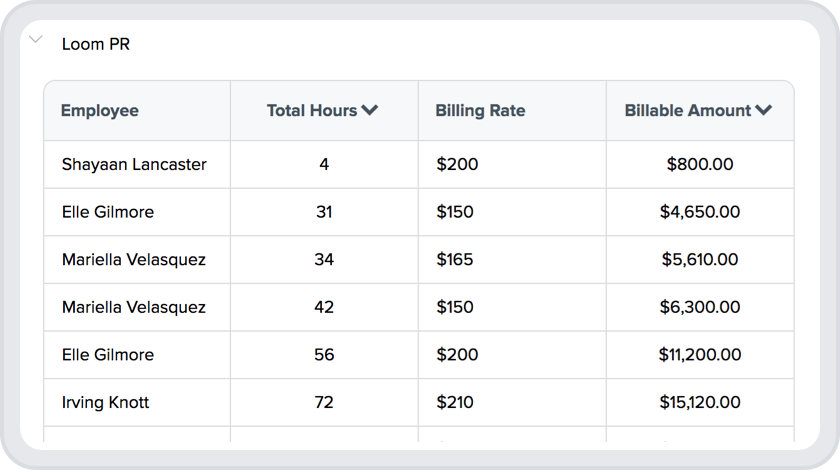
Step 2
Dam Your Revenue Leakage
One of the biggest challenges for businesses is identifying areas where they’re losing money, also known as “revenue leakage.” Fortunately, ClickTime provides a solution. With our robust reporting tools, companies can easily analyze the profitability of every employee, project, and client. By comparing revenue generated to the resources expended, you can quickly identify unprofitable areas of your business and take action to correct them. ClickTime provides the data and insights you need to make informed decisions, helping you maximize profits and grow your business.
Step 2 > Revenue Leakage Let Go of Unprofitable Clients, Projects, or Employees
Letting go of unprofitable clients, projects, or employees is essential for any professional service business. Unprofitable projects lower your average blended billing rate, destroy profit margins, and waste valuable time. By focusing on the projects that provide the highest margins for your time, you can increase your effective billing rate without altering your rate cards.
Create Customized Profitability Reports in ClickTime
ClickTime has an entire Business Intelligence & Analytics tool embedded directly in our platform. This tool allows you to customize your profitability reports in any way imaginable. Create easy-to-read graphs detailing your profitability by client, project, employee, or any custom attribute created in our system.
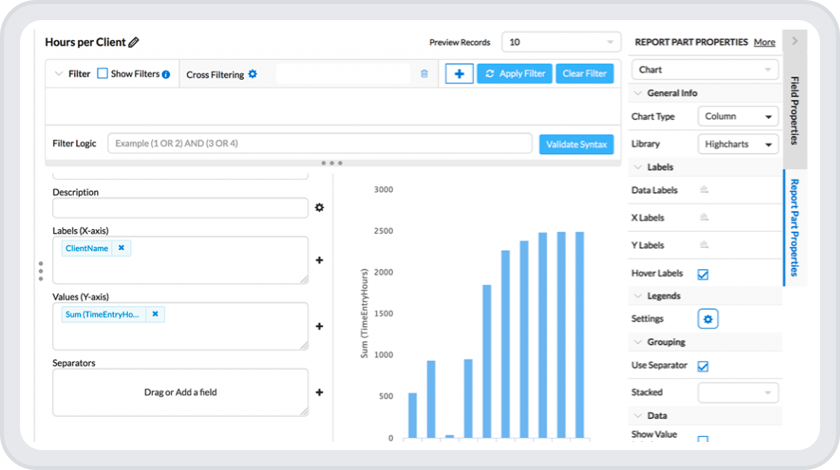
Step 3
Justify Your New Billing Rates
ClickTime’s data assists finance leaders in justifying their new billing rates. The accurate metrics obtained from ClickTime enable finance leaders to explain the rationale behind the updated billing rates to the entire company and quickly get buy-in from all stakeholders.
ClickTime’s historical project, client, and employee data help ensure that the new billing rates are based on sound insights, allowing finance leaders to make decisions with confidence.
Step 3 > New Billing Rates Identify Your Desired Profit Margin
To determine your desired profit margin, consider your company’s industry, size, and growth goals. You can also look at industry benchmarks and compare your performance to your competitors. Additionally, consider your services’ value and the pricing strategy you want to implement.
Ultimately, the profit margin you choose should be sustainable and allow you to achieve your long-term business goals while remaining competitive in the market. Once you have determined your desired profit margin, you can use it to calculate your ideal billing rates and ensure that your business remains profitable.
Generate a Portfolio View of Profit Margins in ClickTime
Create a portfolio view of all your profit margins in ClickTime. Slice the view in any way you’d like – by project, client, or any other attribute you designate. With our Business Intelligence & Analytics tool, you can receive portfolio health reports directly in your email inbox.
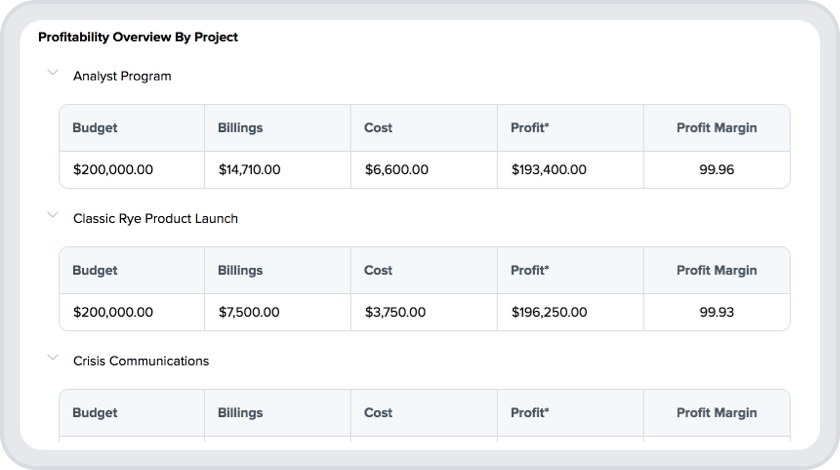
Step 3 > New Billing Rates Finalize Your Company’s Necessary Blended Billing Rate
After determining your firm’s ideal profit margin, you can create a blended base rate for your entire staff.
Using a blended billing rate can simplify the billing process for you and your clients. Clients often prefer a single, predictable rate rather than dealing with multiple rates for different roles. A blended rate can also mitigate the risk of undercharging for higher-level positions or overcharging for lower-level work. By calculating a weighted average based on your planned rates for each role, you can arrive at a fair and transparent rate that accurately reflects the value of your services. This can improve client satisfaction and help build trust in your business relationships.
Set a Default Billing Rate in ClickTime
ClickTime allows you to set a default billing rate, or a base rate, across all of your employees. While you can customize billing rates based on the employee, project, client, or task at hand, setting a default billing rate is helpful for forecasting new project budgets within the system.

Step 4
Configure the Right Billing Model for Each Project
Now that you know what each project’s blended rate should be and have identified your desired margin, it’s time to choose which billing model will optimize your profitability. One of the main advantages of using ClickTime is its flexibility in the billing process.
Unlike other software vendors that require clients to adapt to their system’s limitations, ClickTime is designed to adapt to your unique billing needs. This means that your professional service firm can deploy any billing model you desire, whether it’s hourly billing, fixed-fee billing, retainer-based, or any other model that works for your business.
ClickTime makes it easy to import and create rate cards, store them securely, and apply them to clients, projects, or employees. This ensures businesses can accurately track and bill for their services without compromising the efficiency of their billing processes.
Step 4 > Billing Model Time & Materials
Time and materials is a billing model in which a client is charged based on the labor hours and expenses incurred by the service provider. In this model, the provider charges the client for hours worked and additional expenses, such as travel or materials.
This billing model is best when the project’s scope is uncertain or when changes to the project are likely to occur. It offers flexibility for both the provider and client, as the client can adjust the scope of the project, and the provider can adjust the billing rate based on the work required.
Bill by Time & Materials in ClickTime
ClickTime’s advanced billing rates allow you to create rate cards based on the employee, client, project, or task at hand. Quickly update rate cards in bulk via our Import Tool. And with our Expense Module, your team can allocate material expenses directly to your projects. This way, you’ll always bill the correct amount to each client.
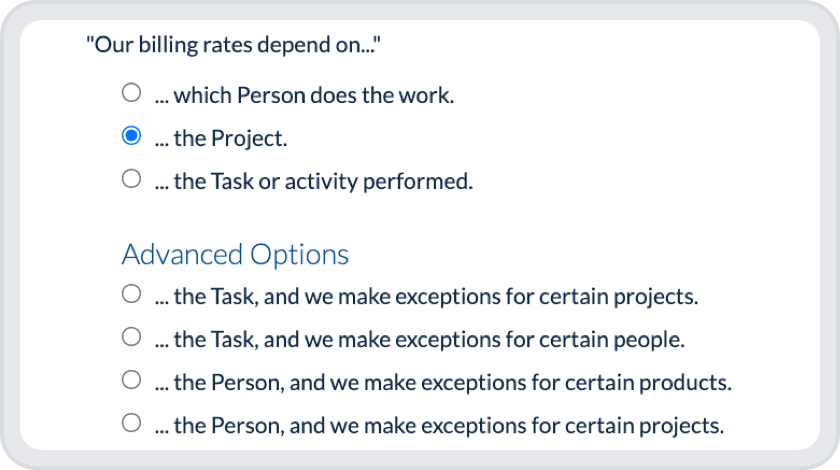
Step 4 > Billing Model Fixed Fee Projects
Fixed fee billing is a pricing strategy where a service provider charges a predetermined fee for a specific project or service, regardless of the time and resources required to complete it.
This billing model is best when the project’s scope is well-defined, and the service provider understands the work involved. Fixed fee billing can give clients a sense of security and predictability while allowing service providers to earn more revenue by completing the job efficiently.
Create Fixed Fee Projects in ClickTime
ClickTime makes it easy to track time against one-off, fixed-fee projects. As employees log hours against these projects, managers can see their labor costs in real-time. This allows your team to protect profit margins when projects become derailed.
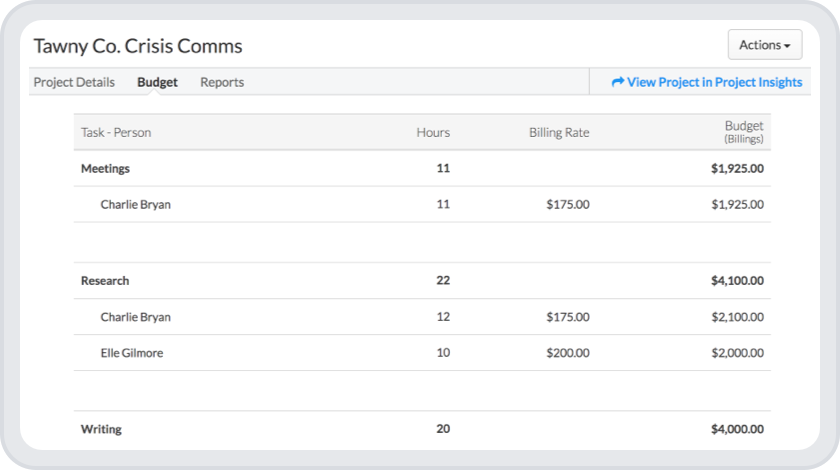
Step 4 > Billing Model Retainer Billing
Retainer billing is a model where clients pay a set fee upfront for a specific period, such as a month or a year, to secure access to certain services or hours from a professional services firm.
This model is best used when clients require ongoing services or advice, as it guarantees a set amount of time and resources from the firm, providing predictable cash flow. Retainer billing is also beneficial for clients who want access to a firm’s expertise on an ongoing basis but do not have the need or budget for full-time staff.
Set Up Retainers in ClickTime
ClickTime’s Resource Management tool was originally purpose-built for retainer-based billing models. Our platform will apply the correct billing rate to each employee on your retainer projects. With Resource Management, you can create monthly client budgets, assign work hours to employees, and monitor budget burndown in real-time to avoid overservicing.
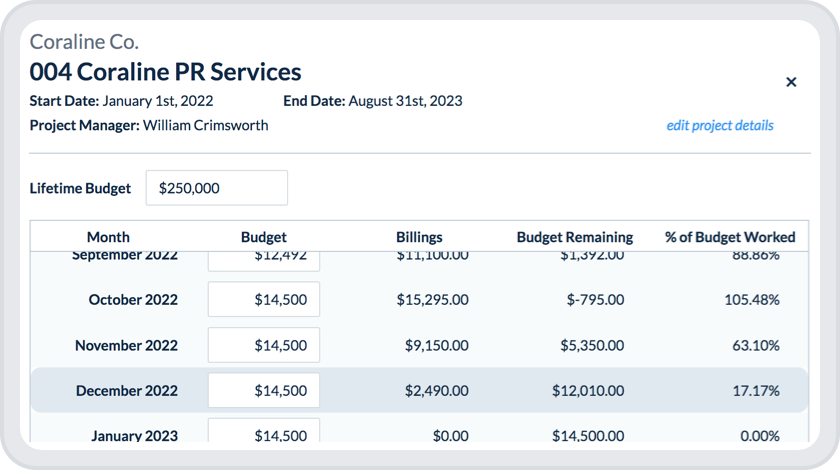
Optimize Your Billing Rates Today
Optimizing billing rates is critical to running a successful professional services business. By accurately determining the proper billing rates and models for your company’s services, you can ensure you are charging enough to cover your costs and reach your profitability goals.
ClickTime is a powerful tool that can help you with this process by providing valuable insights into employee productivity, project costs, and profitability. With ClickTime, you can make informed decisions about your billing rates and quickly deploy optimized billing models, ensuring that your company is on track to achieve financial success.






